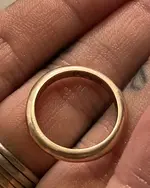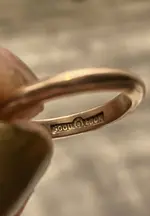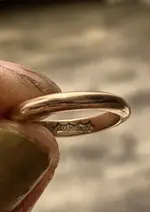Welcome to Tnet Jenny
American standards for precious metal marking have always been an unholy mixture of self-regulation without official assay, consumer protection regulation of descriptions to prevent purchasers being misled, and mandatory technical standards relating to composition. As things stand today, “solid gold” is an acceptable marketing term for any gold-containing item which is not hollow or plated. However the inclusion of the word “gold” as a potentially misleading description then requires the proportion of gold to be stated via a karat mark, and the technical definition for anything to be called “gold” requires a minimum of 10k. Other countries have different minimum standards… it’s 9k in the United Kingdom for example.
That hasn’t always been the case in the US however, and particularly not prior to the “National Gold and Silver Stamping Act of 1906”. Prior to the Act, the term “solid gold” without any karat mark was exploited by some manufacturers on the basis that it ‘helped’ purchasers understand that they weren’t getting a plated item, but cynically trading on the hope that purchasers would not understand that “solid gold” is not the same thing as “pure gold”. Some makers were more open about this than others, at least to trade customers at wholesale level if not at retail level.
For example, the Providence Ring Manufacturing Company produced such items between 1898-1905 with no karat mark and their catalogue states that their “Solid Gold” marked rings are either 6 karat or 8 karat gold. The 8k rings were listed at $15 per dozen. By contrast, their more expensive 10k, 14k and 18k rings were marked with a 10, 14, or 18 inside the company trademark.
Providence were not the only company using this ‘ruse’ but, for the known examples which have been subsequently tested, all have proved to be lower than 10K although with at least some proportion of gold. Here’s a couple of examples, although I’m not 100% sure that these are from Providence or that they have been tested for gold content.
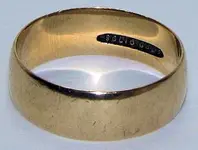
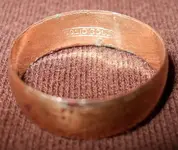
Your mark is a little more elaborate, inside a scalloped cartouche and the additional “Good Luck” mark appears to have a letter ‘J’ inside a stylised solitaire ring between the two words. I would assume that to be the maker’s mark (a company with a name beginning with J) but I don’t know who that might be and it doesn’t come up on a registered trademark search. Nevertheless, I would think it from the same era as the rings from Providence. It won’t have any value beyond its gold content, which I’m sure will be below 10k like the other examples that have been tested... and outright fakes with no gold at all almost certainly exist too.



